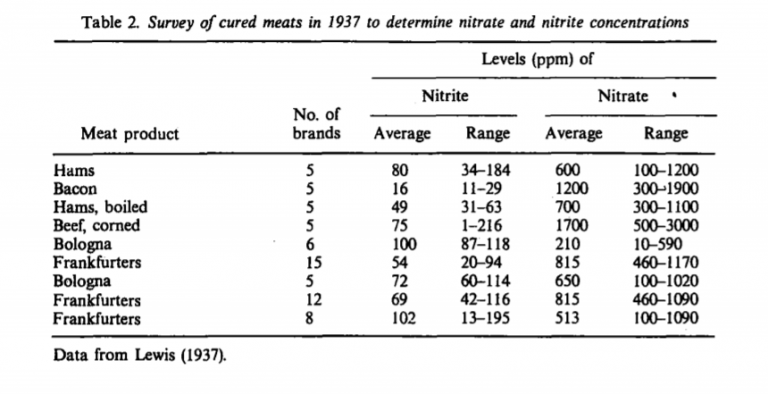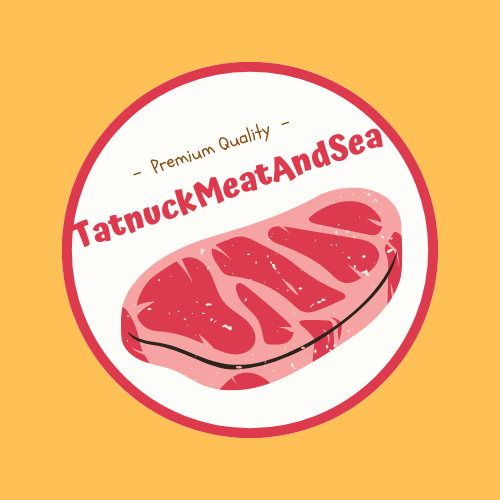Nitrates and nitrites are common food preservatives, especially in cured and processed meats like ham, bacon, sausages and deli meats. They give these foods their characteristic pink color and unique flavor However, there are concerns that nitrates and nitrites in pork and other meats may have negative health effects. This article provides a deep dive into nitrates and nitrites in pork, examining why they’re used, their health impacts, and whether nitrate-free pork alternatives live up to their claims
Why Are Nitrates/Nitrites Added to Pork and Other Meats?
Nitrates and nitrites have been used for thousands of years to cure and preserve meats. In the modern food industry, these compounds serve a few key functions
-
Preservation – Nitrites inhibit the growth of bacteria, especially Clostridium botulinum which causes botulism, a life-threatening illness. This makes cured meats safer.
-
Color – Nitrites interact with the iron in meat to form a stable pink pigment called nitrosohemochrome. This gives cured pork and other meats their recognizable pink color.
-
Flavor – Along with the pink color, nitrites contribute to the characteristic tangy, salty flavor of cured meats that people love. The flavor is very distinct from uncured pork.
So in essence, nitrates and nitrites act as preservatives while also impacting the sensory qualities of pork and other cured meats. This explains their widespread use.
Which Foods Tend to Contain Nitrates/Nitrites?
While nitrates can be found in various foods these are the most common sources
-
Cured Meats – Ham, bacon, sausages, hot dogs, deli meats.
-
Vegetables – Spinach, arugula, beets, radishes, celery, carrots.
-
Cheese – Hard cheeses like parmesan.
-
Drinking Water – Especially from wells where nitrate leaches into groundwater from fertilizer.
Meat products contain added nitrates/nitrites for curing. Vegetables contain nitrates naturally, which are then converted to nitrites by bacteria in the mouth and gut.
In meat, the maximum nitrite levels set by the USDA are:
- Bacon – 120 ppm
- Dry cured ham – 200 ppm
- Other cured meats – 156 ppm
So a typical serving of bacon may contain around 0.5-1 mg of nitrite from the curing process.
Potential Health Risks of Nitrates/Nitrites
There are two main health concerns associated with nitrates and nitrites:
1. Cancer
Some epidemiological studies have found a link between high processed meat consumption and increased risk for colorectal cancer. It’s hypothesized that nitrosamines formed from nitrites in the stomach could play a role.
However, the evidence is not conclusive. Overall meat intake, cooking methods, and lifestyle factors also influence cancer risk.
2. Nitrosamine Formation
Under certain conditions like high heat, nitrites can combine with amines to form nitrosamines, which are known carcinogens. However, the addition of vitamin C inhibits this reaction. Meat processors now add vitamin C to cured meats.
High nitrite intake may also interact with gut conditions like dysbiosis to drive nitrosamine formation. So those with digestive issues may be most vulnerable.
Overall, the cancer risk related to nitrates and nitrites is considered low. But it’s recommended to limit intake of processed meats high in these compounds.
“Nitrate-Free” Pork – Does it Live up to the Hype?
Many bacon, ham and sausage products now advertise themselves as “nitrate-free”. But how is this possible while maintaining the cured meat properties people expect?
Most of these products replace nitrates with celery juice powder, which naturally contains high levels of nitrate that converts to nitrite. So they just swap out the synthetic nitrate for a “natural” source, but the meat still gets cured by nitrite in the end.
A few key points about these “nitrate-free” cured pork products:
-
They still contain nitrites derived from celery nitrates.
-
The natural nitrites cure the meat and give the characteristic properties.
-
They are typically more expensive than traditionally cured pork products.
-
Without added vitamin C, they may pose the same small risks regarding nitrosamine formation.
-
They are not necessarily healthier overall if they are still high in fat, salt and calories.
How Much Nitrate/Nitrite is Dangerous?
Research on the nitrate and nitrite intake needed to cause harm is limited. However, some general guidelines include:
-
Nitrite poisoning – Occurs above 200-300 mg per kg body weight according to animal experiments. This equates to 14,000-21,000 mg for a 150 lb adult. Cured meats are nowhere near this level.
-
Nitrosamine formation – Starts occurring in adults at doses over 100 mg. But even 10 mg per day may pose issues for those with gastiritis.
-
Cancer risk – Associated with high intake of processed meat, defined as >50 g per day or 700 g per week. Average cured meat intake is much lower.
Tips for Limiting Nitrates/Nitrites in Your Diet
Here are some suggestions for minimizing your nitrate/nitrite intake from pork and other foods:
-
Limit bacon, ham, sausage and other processed pork to 2-3 times per week.
-
Look for uncured pork options like fresh pork chops and roasts.
-
Opt for lower-sodium versions of ham, bacon and deli meats.
-
When buying cured meats, look for those with no added nitrates or nitrites.
-
Add antioxidants like vitamin C and E to meals with cured meats.
-
Avoid charring or burning cured meats when cooking.
-
Balance intake of cured meats with plenty of fruits and vegetables.
-
Drink water from safe, verified sources to avoid nitrates.
-
Those with GI issues should consider limiting cured meats and opting for fresh cuts.
The Bottom Line
Nitrates and nitrites have been used to cure pork and other meats for centuries. These compounds give cured meats their characteristic properties but also carry some health risks. While recent research suggests the cancer risk may be low for most people, it’s smart to limit intake of processed cured meats like ham, bacon and sausage. Fresh, uncured pork is a healthier choice. If you do indulge in cured pork, choosing lower-sodium options without artificial preservatives can help minimize nitrates and nitrites in your diet.

Enjoy Your BACON! The Nitrate/Nitrite Cancer Scare Destroyed!
FAQ
What meats are high in nitrates?
Are nitrates in meat harmful?
How to tell if your meat has nitrates?
What meats have nitrates?
Cured or processed meats — bacon, sausage, hot dogs, and ham, as well as deli meats such as chicken, turkey, roast beef, and salami — often contain added nitrates and nitrites. These compounds prevent the growth of harmful bacteria, add a salty flavor, and make the meat appear red or pink.
Does cured meat contain nitrates?
Some Pork Products Contain Nitrates and Nitrites Pork products like bacon and some cuts of cured meat may contain nitrates and nitrites. Nitrates and nitrites are a type of chemical preservative commonly used in processed meat. Some epidemiological research suggests there is a link between processed meat and gastrointestinal cancers ( 28, 29 ).
What nitrate is used to cure pork?
Another example is saltpetre – a naturally occurring nitrate sometimes used to cure pork. During the curing process, most of the nitrate in saltpetre converts into nitrite. It’s actually the nitrites that act as a preservative – not nitrates. They also give the meat its rosy appearance.
Does deli meat contain nitrates?
Deli meat is another major source of harmful nitrates. Cured deli meats on average have up to 500 mcg of nitrates per 100 g of meat, while uncured deli meats have about 300 mcg in the same amount of meat. Hot dogs are one of the most processed sources of meat on the market.
